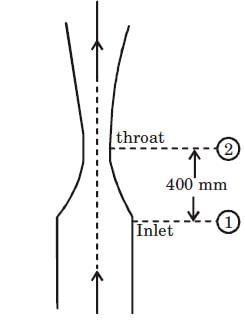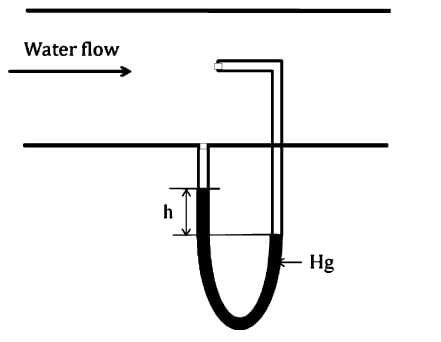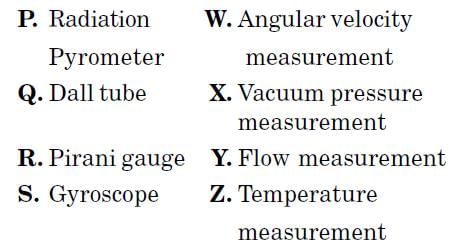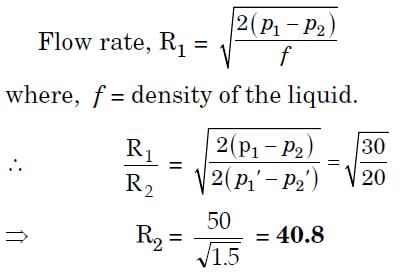Test: Measurement of Flow - Electronics and Communication Engineering (ECE) MCQ
15 Questions MCQ Test Sensor & Industrial Instrumentation - Test: Measurement of Flow
In a 30-in diameter pipe, a circular orifice has a diameter of 20 in, and the difference in the height of the manometer levels is 2.3 ft. What is the flow rate in cubic feet per second if K is 0.97?
Compared to the upstream to the throat of a venturi meter, which of the following is true
A turbine flowmeter is rotating at 72 rpm. The flux ψ linked to the nearby magnet and coil assembly is given by ψ (θ) = 3 + cos (4θ) mWb, where ψ is the angular position (in radian). The amplitude and frequency of the output voltage signal, respectively, are
A differential pressure transmitter is used to measure the flow rate in a pipe. Due to aging, the sensitivity of the pressure transmitter is reduced by 5%. All other aspects of the flow meter remaining constant; change in the sensitivity of the flow measurement is
The accompanying figure shows a VERTICAL venturi meter with upward water flow. When the measured static pressure difference, p1 – p2, between the inlet and the throat is 30 kPa, the flow rate is found to be 50 liters per second. Assume that the coefficient of discharge remains the same.

When p1 – p2 = 20 kPa, the flow rate, in litres per second, is
In a rotameter, used for measuring the flow rate of a fluid, Pa: pressure above the float, Pb: pressure below the float, A: area of float, V: volume of the float, d1: density of float material, d2: density of the fluid, g: acceleration due to gravity. The following equation describes the equilibrium of the float.
The velocity of water flow (density 1000 kg/m3) in a horizontal pipe is measured using the PITOT tube shown below. The fluid in the U-tube manometer is mercury with a density of 13534 kg/m3. Assume g = 9.81 m/s2. If the height difference (h) is measured as 94.1 mm, the velocity of flow of water in m/s is

If all particle of fluid has a path parallel to the wall, it is known as ____________
Which of the following represents the Reynolds number for laminar flow?
Which instrument measures velocity at a point of the fluid in a stream?
Which of the following represents obstruction type flow measuring systems?
Which of the following represents the correct relation between flow rate and pipe area?
Which of the following converts flow to rotational motion?
|
22 videos|28 docs|29 tests
|




 = 4 sinθ dθ/dt = 4 sin4θ x (2 πf)
= 4 sinθ dθ/dt = 4 sin4θ x (2 πf)













